The temple dedicated to national hero Nguyen Trung Truc in the north of the island is one such place, which many locals visit during festive events.
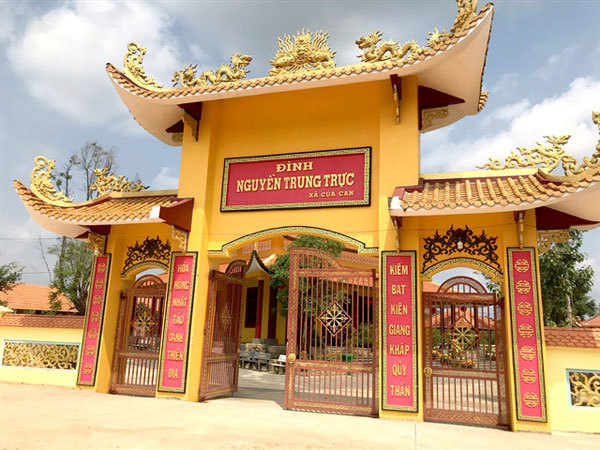 |
| Gate of the temple dedicated to Nguyen Trung Truc in Cu Can Commune, Phu Quoc Island. VNS Photos Thu Hien |
The newly upgraded temple is located on a small, quiet road near Ganh Dau Cape, 40km from the island’s centre. From the cape, one can see Cambodia.
The temple is simple in design and retains its traditional architecture. The large front yard in the temple can host hundreds of people for important events.
Many paintings hung inside describe heroic fighting led by the national hero against French colonialists in the middle of the 19th century.
Various memorabilia involving his fights against the French on Phu Quoc Island are displayed in glass frames at the temple including swords, drums and gongs.
The main hall is dedicated to Nguyen Trung Truc and his supporters as well as people involved in his uprising.
A vestige of the boat used to carry food for Truc’s army is on display in the garden of the temple.
 |
| Hero Nguyen Trung Truc is worship in the centre, while his supporters are worshipped on both sides of the main worship hall. |
Trang Kim Nghia, also known as teacher Dong, who manages the temple recalled: “In 1993, when we first came here, the area was deserted and poor, surrounded by dense forest.
“There was no healthcare station in the area,” she said. “We asked local authorities for land, cleared the trees to set up a healthcare room and gave herbal medicine to the needy.”
Nghia said they placed an altar to Nguyen Trung Truc in the central room, while the two next rooms were used for health checking.
“Locals often burnt incenses to pay tribute to him first, then check their health next,” she recalled. “Gradually, the place has become one of the nine biggest temples in Kien Giang Province dedicated to the national hero.”
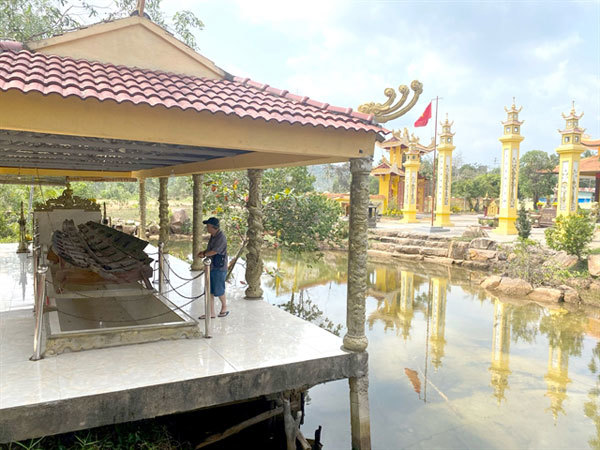 |
| A piece of the hero's ship carrying food for his army is now displayed at a roofed area in the garden of the temple. |
Brave hero
Nguyen Trung Truc (1837-1868) was born as Chon into a fisher family in Gia Dinh, today’s Ben Luc District of Long An Province.
In 1859, he was recruited as a soldier under Truong Dinh’s insurgent force against the French.
In 1861, he gathered many local farmers to fight against the French in Tan An (in today’s Long An) and Rach Gia (in today Kien Giang). Thanks to his many victories, Truc was promoted by King Tu Duc in Hue as a Military Chief, who protected sovereignty in Ha Tien.
At the end of 1861, Chief Truc's force together with Truong Dinh’s troops attacked and burned the warship L’Esperance of the French navy in Nhat Tao (Ben Luc) on December 10, 1861. They killed many French soldiers in the fighting.
When the Hue Court was forced to sign the Nham Tuat Agreement in 1862 to give three provinces in the southeast to the French, Nguyen Trung Truc was assigned as a military chief in the Gia Dinh, Bien Hoa area.
On June 23, 1867, when Ha Tien was lost to the French, Truc withdrew his troops to Rach Gia and established a military base in Hon Chong to continue fighting.
On June 16, 1868, Truc's insurgents attacked Rach Gia military station of the French, killing the Rach Gia provincial governor, five French officers and 67 soldiers. The insurgents also took lots of weapons and controlled Rach Gia for five days. The fight was a significant event that threatened the French colonial regime and was recorded in French military history.
Two days later, the French army headquarters in My Tho sent more troops from Vinh Long to Rach Gia. Though Truc’s army fought bravely against fierce counter-attacks by the French, they had to withdraw to Hon Chong (Kien Luong).
The French took back Kien Giang Military Station on June 21, 1868, and continued to hunt for the Vietnamese insurgents in Hon Chong.
In August 1868, Truc's force had to evacuate from Hon Chong to Phu Quoc Island and established a base in a forest in today’s Cua Can Commune.
The French then attacked the base, seized Truc’s mother and the families of his soldiers to force them to surrender.
Nguyen Trung Truc and his troops had to surrender to save the lives of their families.
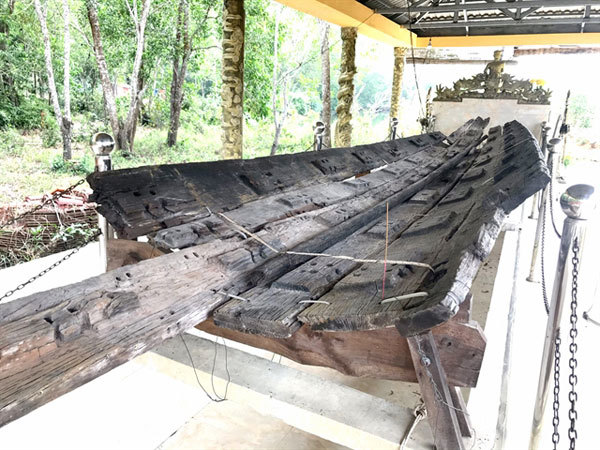 |
| A closer look at the vestige of Nguyen Trung Truc's ship carrying food for his army. |
In September 1868, Nguyen Trung Truc was taken to Sai Gon, where he faced the French enemy for the final time in his life. He stated with confidence: “Only when there is no grass in Vietnam, will there be no more Vietnamese fighting against foreign invaders."
The French then killed him at Rach Gia Market on October 27, 1868. He was only 31.
Holy temple
Many temples have been built to pay homage to the brave hero in Kien Giang and Long An provinces including the one in his homeland, Long An; the one in Rach Gia, where he was killed and the temple in Ganh Dau – Phu Quoc, where he was caught in his final fight.
The temple was built in 1993 and was recognised as a provincial-level cultural and historical heritage site in 2011. The temple was renovated totally and opened to the public in October 2016.
Since 1996, on the 27th day of the eighth lunar month, locals gather at the temple to celebrate Nguyen Trung Truc’s victory against the French.
People bring along various kinds of food, re-enact the fight and burn a ship at the site.
The temple also hosts various games like stick pushing, boat racing, tug of war, chess, and lion dancing.
Visitors today may find many kinds of herbs and peels of fruits dried at the temple yard, which have been used as herbal medicine and given free to those needed.
Nghia said every day, many people like fishermen, students and merchants come to pay tribute to the heroes as well as wish for peace, success and wealth.
Locals in the Mekong Delta considered him a genie who made a great contribution to the nation.
“Fishermen in Phu Quoc Island believe he is a genie protecting them at sea during fierce storms,” Nghia said.
VNS
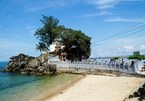
300-year-old temple on Phu Quoc protects fishermen
The 300-year-old Dinh Cau Temple on Kien Giang province’s Phu Quoc island is a place for fishermen to pray for a smooth voyage.
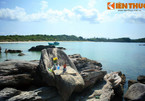
Phu Quoc Magic Well
The Magic Well, Gieng Ngu, is located 2km away from An Thoi Ward. It is not only a historical but also mysterious attraction that should not be missed by any visitors of Phu Quoc.